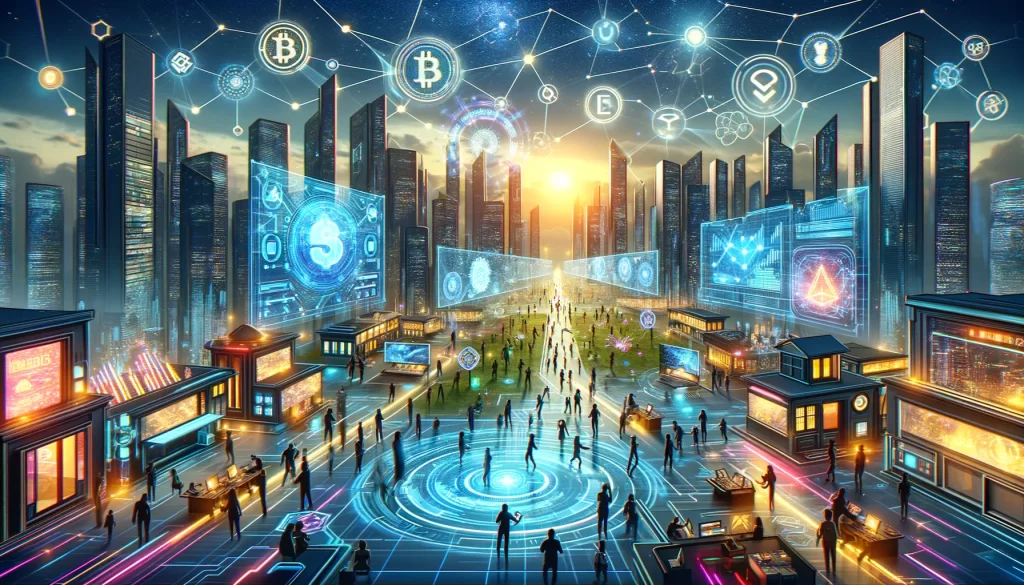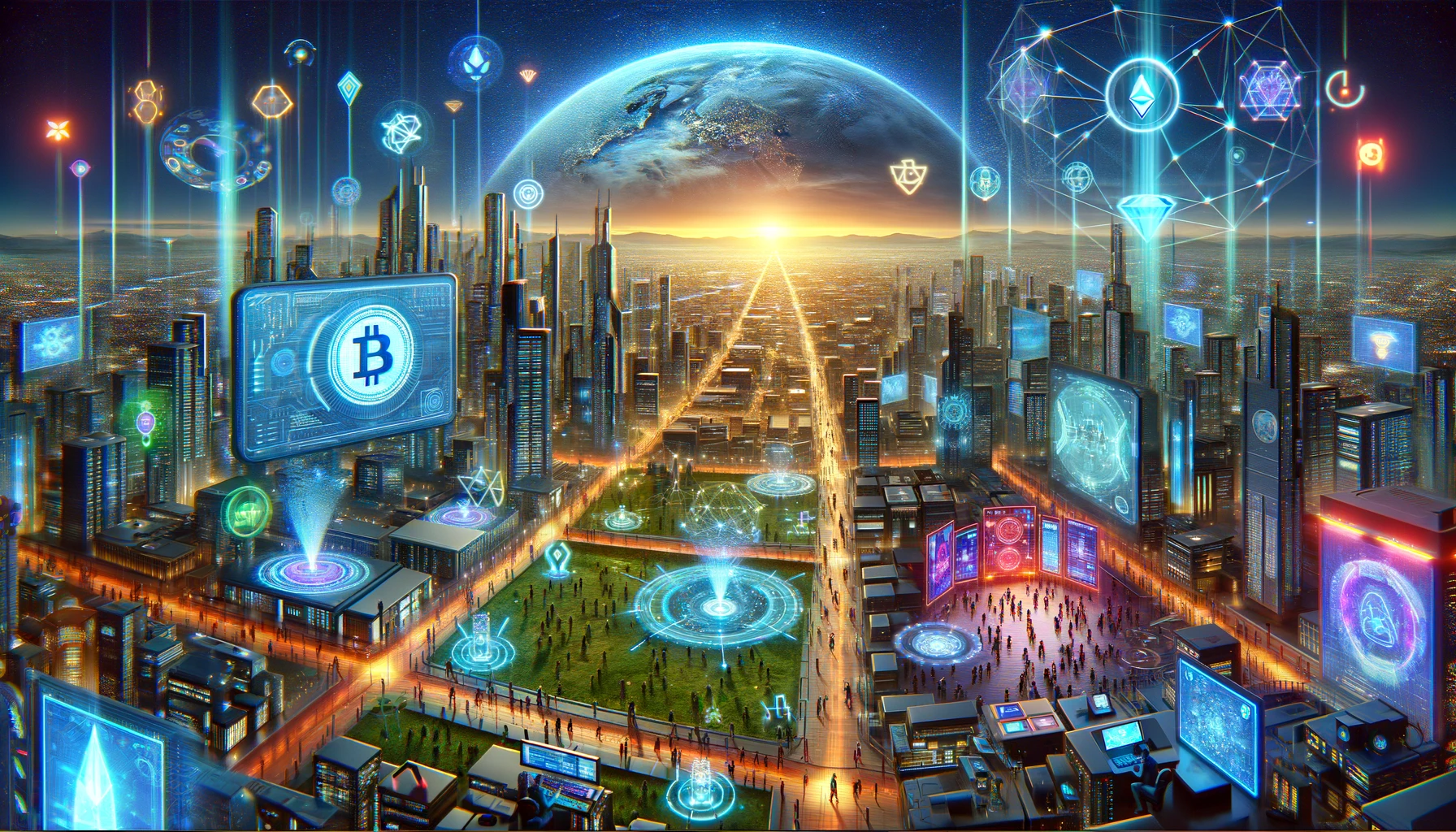In the ever-evolving digital gaming landscape, the emergence of Play-to-Earn (P2E) models within Web3 gaming marks a revolutionary shift, redefining the boundaries between gaming and economic opportunity. This new paradigm, deeply rooted in blockchain technology and cryptocurrency principles, offers a unique blend of entertainment and financial incentives, fundamentally altering the player’s engagement with the game.
The Rise of Play-to-Earn in Web3 Gaming
The gaming industry has witnessed a transformative shift with the advent of Play-to-Earn (P2E) games, a cornerstone in the burgeoning Web3 ecosystem. These games, leveraging blockchain technology, have redefined the traditional gaming experience by empowering players with actual ownership of in-game assets and the potential for real-world earnings. In a Play-to-Earn game, players are rewarded with digital assets, often in the form of cryptocurrencies or NFTs, which can be traded or sold in various marketplaces. This revolutionary model incentivizes gameplay and fosters a new economic framework within the gaming world, where the value generated within the game extends beyond the digital realm.
The growth of P2E games is inseparable from the broader expansion of blockchain and Web3 technologies, offering a decentralized and transparent platform for gaming transactions. Unlike traditional games, where in-game purchases and assets are confined to the game’s ecosystem, Play-to-Earn games seamlessly integrate gaming experiences with the broader digital economy. Players are consumers, active participants, and stakeholders in the game’s economy. This democratization of gaming revenue, where players earn from their engagement and contributions, has sparked significant interest in Play-to-Earn games, establishing them as a pivotal component of the future of online gaming.
Understanding Play-to-Earn: How Does It Work?
Game Mechanics and Tokenomics
Play-To-Earn games are ingeniously crafted, intertwining engaging game mechanics with sophisticated Tokenomics. The essence of these games lies in their ability to assign real-world value to in-game achievements through blockchain technology. Each game features a unique set of rules and objectives where players can earn tokens – fungible like cryptocurrencies or unique like NFTs. These digital assets are integral to the game’s economy and are often used for in-game purchases, trading, or upgrading characters. The Tokenomics are carefully designed to ensure a sustainable economy, often involving mechanisms like scarcity of resources, staking, and burning of tokens, which can influence their value and demand.
Smart Contracts and Decentralized Platforms
The backbone of Play-to-Earn games is their reliance on smart contracts and decentralized platforms. Smart contracts automate the execution of agreements in the game, such as reward distribution, asset ownership transfer, and adherence to game rules, without any central authority. This automation ensures transparency and fairness, building trust among players. Decentralized platforms, however, provide the infrastructure for these games. They allow for decentralized governance and often give players a say in the development and future direction of the game, fostering a community-driven environment.
How Players Earn in Play-to-Earn Games
The earning mechanism in Play-to-Earn games is what sets them apart. Players earn by actively participating in the game’s ecosystem – completing missions, winning battles, or achieving specific milestones. The earnings are usually in the form of in-game tokens or NFTs, which can be exchanged for real money in various cryptocurrency exchanges or used for transactions within the game. Some games also allow players to earn passive income by staking their tokens or renting out their NFTs to other players. This economic model rewards players for their skills and time investment and creates a vibrant market for digital assets, contributing to a dynamic and sustainable in-game economy.

NFTs in Play-to-Earn: Ownership and In-Game Assets
In the realm of Play-to-Earn games, Non-Fungible Tokens (NFTs) have revolutionized the concept of ownership and the value of in-game assets. NFTs represent unique digital items, from rare characters to exclusive items, each with distinct properties and value. Unlike traditional games where purchases remain tied to the game, NFTs offer players actual ownership, verified on the blockchain. This shift empowers players with control over their digital assets and allows for the potential resale or trade on various NFT marketplaces. Integrating NFTs into gaming has thus created a tangible value proposition, transforming virtual items into assets with real-world value.
In Play-to-Earn games, NFTs are a cornerstone for gameplay and the economy. These tokens aren’t just collectibles; they often play a crucial role in the game’s mechanics. For instance, owning a specific NFT might grant players access to exclusive levels, special abilities, or additional earning opportunities within the game. This interplay between NFTs and game mechanics introduces a strategic layer where players must decide how to best use or trade their assets for optimal gameplay and earning potential. Furthermore, the rarity and uniqueness of NFTs drive their value, creating a dynamic and often lucrative in-game economy.
Challenges and Concerns in Play-to-Earn Gaming
One of the main challenges in Play-to-Earn gaming is the issue of sustainability and balance in the game’s economy. As these games often rely on a continuous influx of new players to maintain the value of in-game assets, there’s a risk of creating unsustainable economic models akin to a pyramid scheme. This could lead to inflated asset prices and eventual market crashes, harming the player base. Additionally, the reliance on cryptocurrencies brings volatility and risk, making the in-game earnings unstable. There’s also the concern of creating an overly competitive environment, where the focus on earning can overshadow the enjoyment and entertainment aspect of gaming.
Another significant concern is the potential for exploitation and security risks. Smart contracts, while automating transactions, can have vulnerabilities that malicious actors might exploit, leading to loss of assets for players. Moreover, the anonymity and lack of regulation in cryptocurrency transactions raise concerns about money laundering and other illicit activities. There’s also the issue of accessibility, as Play-to-Earn games often require an initial investment to start playing, which can exclude players who cannot afford to invest. Additionally, the environmental impact of blockchain technology, primarily due to its high energy consumption, remains a contentious issue, raising concerns about the sustainability of these games.
Investing in Play-to-Earn: Opportunities and Risks
Investing in Play-to-Earn games offers unique opportunities, primarily driven by the burgeoning intersection of gaming and blockchain technology. For investors, this sector presents a chance to tap into a rapidly growing market where gaming meets decentralized finance. The allure lies in the potential high returns from early investments in successful games, as the value of in-game assets can increase exponentially. Additionally, Play-to-Earn models create a new revenue stream for players and investors through acquiring and trading digital assets like NFTs. This sector also fosters innovation in gaming experiences, potentially reshaping the industry and leading to significant long-term growth.
However, the Play-to-Earn space is fraught with risks, primarily due to its nascent and volatile nature. The market for digital assets is highly speculative and can be influenced by factors like player adoption, market trends, and regulatory changes. This unpredictability can lead to significant fluctuations in asset values, posing a risk for investors seeking stable returns. Furthermore, the technology underpinning these games, primarily blockchain and smart contracts, is still evolving, which could lead to technical challenges or security vulnerabilities. Regulatory uncertainty also looms over the sector as governments grapple with how to oversee digital assets and decentralized financial systems, potentially impacting future operations and profitability.
Web3 Gaming Communities and Metaverse Integration
Web3 gaming communities are at the forefront of revolutionizing how players interact and engage within digital realms. These communities, built around blockchain-based games, foster a sense of ownership and participation that was previously unattainable in traditional gaming ecosystems. Players are passive consumers and active contributors, often with a say in game development and governance through decentralized autonomous organizations (DAOs). This heightened level of engagement is further amplified by integrating these games into broader metaverse platforms, creating interconnected virtual worlds where communities can interact, trade, and explore beyond the boundaries of individual games.
Integrating Web3 gaming into the metaverse paves the way for unprecedented immersive experiences. Gaming is no longer a standalone activity in these expansive virtual spaces but part of a larger, interconnected digital universe. Players can seamlessly move their digital assets, like characters and items, across different games and environments within the metaverse. This integration enhances the user experience and creates a unified economy across multiple platforms. It allows for more dynamic interactions and collaborations among gaming communities, fostering a rich, diverse, and vibrant digital ecosystem that transcends traditional gaming boundaries.
The Future of Play-to-Earn: Predictions and Trends
As we look towards the future of Play-to-Earn gaming, several predictions and trends emerge, indicating a dynamic evolution of this sector. Analysts anticipate a surge in integrating advanced technologies like AI and VR, further enhancing the gaming experience and attracting a wider audience. The trend towards more sophisticated and engaging game narratives, coupled with the earning potential, is expected to drive player retention and growth. Additionally, there’s a growing focus on creating more sustainable and balanced economic models within these games, addressing current concerns over the long-term viability of Play-to-Earn ecosystems. We can also see a rise in partnerships between traditional gaming companies and blockchain developers, bridging the gap between conventional and blockchain gaming.
Another significant trend is the potential regulation of Play-to-Earn games and digital assets as governments begin to recognize the economic impact of this sector. This could lead to more standardized practices and stability in the market, attracting institutional investors. Furthermore, Play-to-Earn will likely expand beyond gaming into other digital experiences, creating new avenues for earning digital assets. There’s also an increasing emphasis on community-driven development and governance, empowering players to have a more significant role in shaping the future of these games. As the technology matures, we also see solutions to current challenges like environmental concerns, making Play-to-Earn gaming more sustainable and widely accepted.
Getting Started with Play-to-Earn in Web3
Embarking on a journey in Play-to-Earn gaming within the Web3 ecosystem begins with understanding the basics of blockchain technology and cryptocurrency. Aspiring players must familiarize themselves with digital wallets, essential for storing and transacting in cryptocurrencies and digital assets like NFTs. Selecting the right game is crucial; it should align with one’s interests and investment capabilities. It is key to research various Play-to-Earn games, their earning mechanisms, and community feedback. It’s also important to understand the initial investment required, as some games might require purchasing tokens or NFTs to start playing. Joining gaming communities and forums can provide valuable insights and tips from experienced players.
The next step involves actively engaging with the chosen game and its community. Building a gameplay and asset acquisition strategy is essential for success in these games. This includes understanding the game’s economy, the value of its tokens or NFTs, and how to earn and trade them effectively. It’s also important to stay updated with the game’s developments, as the dynamic nature of these games can lead to frequent updates and changes in the game’s mechanics. Caution is advised, especially regarding investments and transactions, as the Play-to-Earn space can be volatile. Embracing a learning mindset and being prepared for successes and setbacks can lead to a rewarding experience in Web3 gaming.

